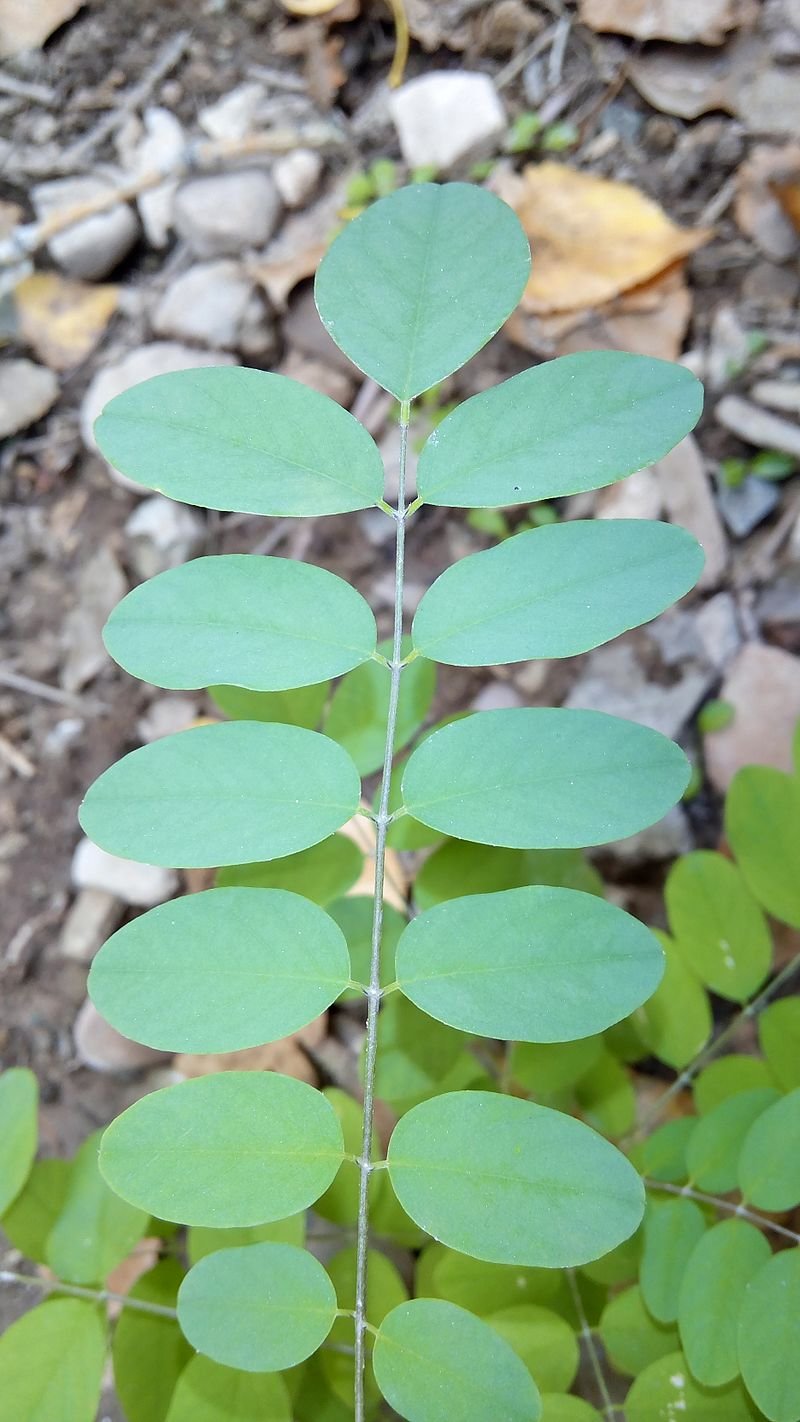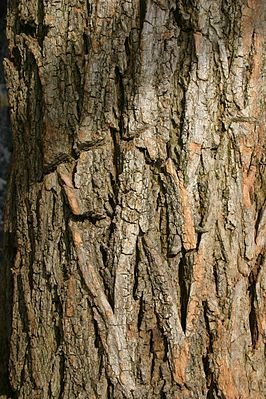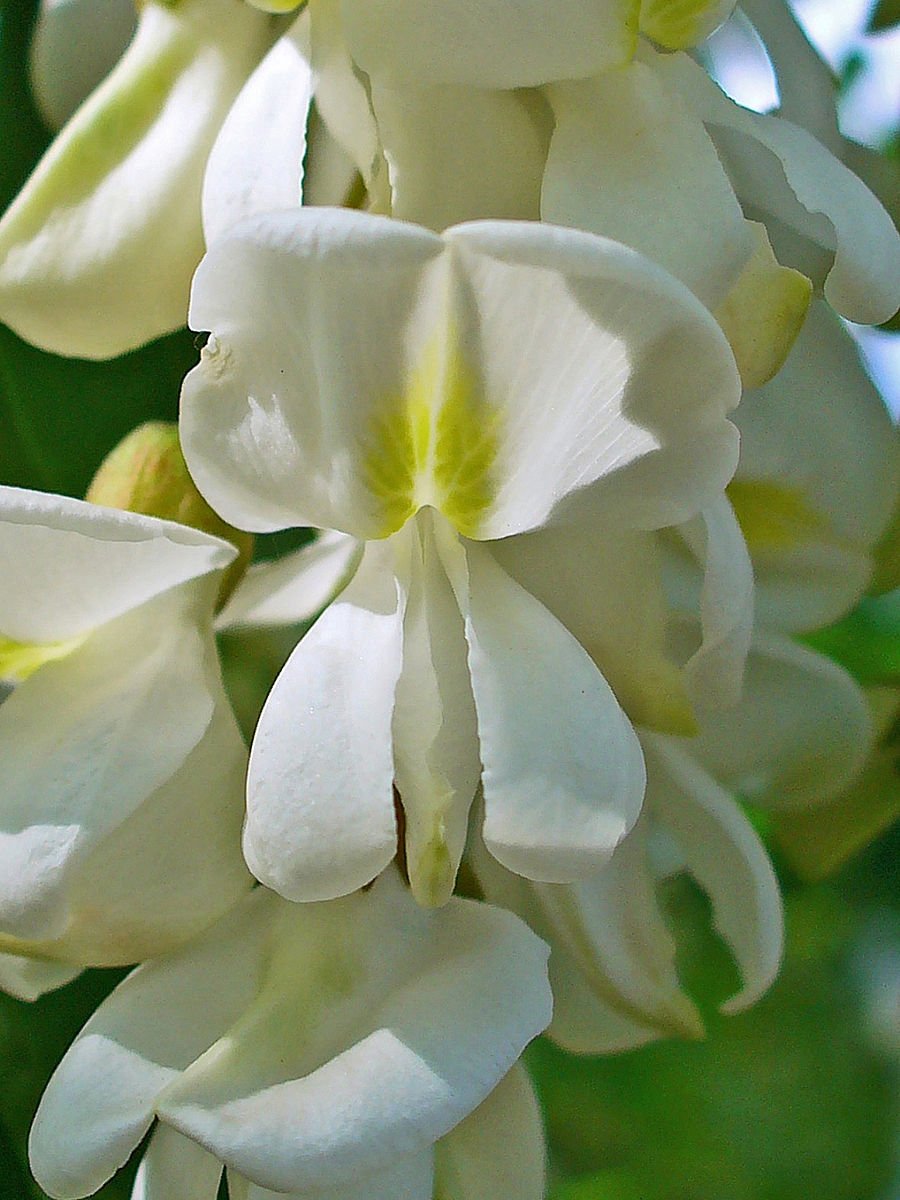
Eastern Black Locust
Eastern Black Locust
Botanical Name: Robinia pseudoacaciaFamily Name: Fabaceae – Legumes familyOrigin: Eastern United StatesDirectly behind Dodona Manor amongst a stand of 4 trees to the right side of the boxwood hedge is a black locust tree. The black locust is native to the eastern United States, but it has been widely planted and naturalized elsewhere in North America, Europe, Southern Africa, and Asia.
The black locust is a medium-sized hardwood tree that grows up to 100 feet tall and 2 to 4 feet thick trunks. The bark is a reddish black and gray and tinged with red or orange in the groves. It is deeply furrowed into grooves and ridges which run up and down the trunk and cross and form diamond shapes. It is a very upright tree with a straight trunk and narrow crown that grows scraggily over time. The dark blue-green compound leaves with a contrasting lighter underside give this tree a beautiful appearance in the wind and contribute to its grace.
The black locust leaves are compound, meaning that each leaf contains many smaller leaf-like structures called leaflets, which are roughly paired on either side of the stem that runs through the leaf. There is typically one leaflet at the tip of the leaf (odd-pinnate) and the leaves are alternately arranged on the stem. Each leaf is 6 to 14 inches long and contains 9 to 19 leaflets, each being 1 to 2 inches long and ¼ to ¾ inches wide. The leaflets are rounded or slightly indented at that the tip and typically rounded at the base. The leaf color of the fully grown leaves is a dull dark green above and paler beneath. In autumn, the leaves turn a clear pale yellow.
Black locust reproduces sexually via flowers, and asexually via root suckers. The flowers are pollinated by insects. The physical construction of the flower separates the male and female parts so that self-pollination will not typically occur. The seedlings grow rapidly but they have a thick seed coat which means that not all seeds will germinate. The seeds are produced in good crops every year or every other year.
Black locust is a shade-intolerant species and therefore is typical of young woodlands and disturbed areas where sunlight is plentiful, and the soil is dry. In this sense, the black locust can be considered a weed tree. It also spreads by underground shoots or suckers, which contributes to the weedy character of this species. Although similar in general appearance to the honey locust, the black locust lacks that tree's characteristic long-branched thorns on the trunk, having instead pairs of short prickles at the base of each leaf; the leaflets are also much broader than the honey locust.
Black locust has been spread and used as a plant for erosion control as it is fast-growing and generally a tough tree. The wood considered the most durable wood in North America, has been very desirable and motivated people to move the tree to areas where it is not native so the wood can be farmed and used.
The wood is extremely hard, being one of the hardest woods in Northern America. It is very resistant to rot, and durable, making it prized for furniture, flooring, paneling, fence posts, and small watercraft. Black Locust is a highly durable organic wood product that does not require chemical treatment to preserve its beauty for 50 years or longer. Wet, newly cut planks have an offensive odor that disappears with seasoning. Black locust is still in use in some rustic handrail systems.
Black locust is highly valued as firewood for wood-burning stoves; it burns slowly, with little visible flame or smoke, and has a higher heat content than any other species that grows widely in the Eastern United States, it is comparable to the heat content of anthracite coal. For best results, it should be seasoned like any other hardwood, but black locust is also popular because of its ability to burn even when wet.
With a light yellowish color and strength, the wood was much used for decorative inlays and banding in furniture in England and France in the 17th and 18th centuries, under the name "acacia" or "Virginia acacia".
Medicinal and Folklore
The bark, leaves, and wood are toxic to both humans and livestock. Important constituents of the plant are the toxalbumin robin, which loses its toxicity when heated, and robinin, a nontoxic glucoside. In traditional medicine of India, different parts of the black locust are used as a laxative, antispasmodic, and diuretic.
In Romania, the flowers are sometimes used to produce a sweet and perfumed jam. This means manual harvesting of flowers, eliminating the seeds, and boiling the petals with sugar, in certain proportions, to obtain a light sweet, and delicate perfume jam.
Although the bark and leaves are toxic, various reports suggest that the seeds and the young pods of the black locust are edible. Shelled seeds are safe to harvest from summer through fall, and are edible both raw and boiled. Due to the small size of the seeds, shelling them efficiently can prove tedious and difficult. In France, Italy, and Romania, black locust flowers are eaten as beignets after being coated in batter and fried in oil; they are also eaten in Japan, largely as tempura.


